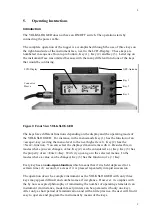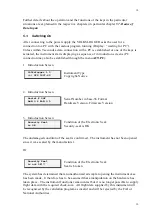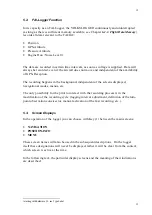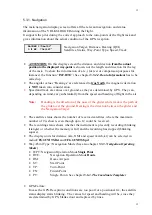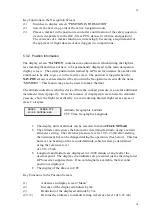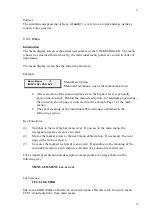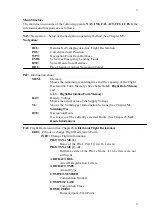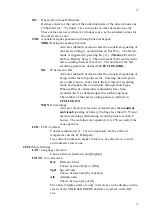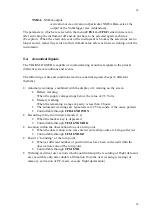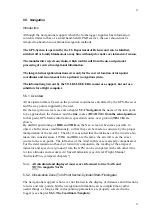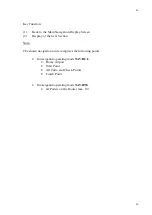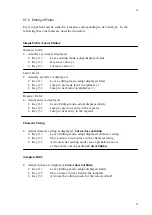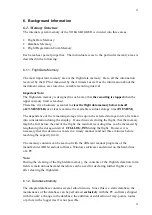
23
23
5.5.3. Navigation Operating Modes
A selection of various types of navigation targets is available to the user. These can be
selected in
the
NAV menu
.
In principle, all different navigation modes can be divided into two classes:
1.
Single Point:
Memorization of the actual position as the new navigation target (
NAV.POS)
and is given
the name “
MEMORY
”. This method may for example be used to mark a thermal or
other temporary navigation point.
(Note: The position cannot be stored in the database, it is only available until
another mode of navigational operation is chosen.)
•
Selection of the navigation target from the WPT-data base. (
NAV.WPT
)
•
Selection from the five nearest airports (
NAV.EMR
)
EMR
=
EM
e
R
gency
•
Direct input or editing of the coordinates of the navigation target (
NAV.DRC
)
DRC
=
D
i
R
e
C
t
2.
Route:
•
Route / Task from the actual flight declaration. This mode of operation is
active as default after turning the instrument on using the last selected task. In
case another mode was selected in the meantime, one can return to the task in
the declaration via
NAV.DCL
or
FAI.EDIT.TASK
.
•
Route from the data base (
NAV.RTE
)
Operation Mode “Single Point”
The single point mode is for the navigation to a
single
point, which can be selected by the
pilot in many different ways. Since the acoustic indication of the presence within the
photo sector does not make sense in this case, only a cylinder with a pre-selected radius
(controllable in menu
CFG1.OZ
) is set with the activation of a single point navigation
mode.
A photo-sector can, if desired by the pilot for whatever reason, be activated regardless.
The photo sector is activated by setting the corresponding sector parameters for the
observation zone manually to the desired values. (Menu
NAV.DRC
).
Operation Mode “Route”
“Route” is the navigation mode, which the pilot primarily comes in contact with. It
serves as the navigation support for the flight to separate points on a pre-defined route.
In the navigation mode “route” one has to differentiate between two cases:
•
Navigation by flight declaration:
For the purpose of information, the home airport (
HM
)
is shown as the first point
of the route. This point acts neutrally as far as the recognition of the observation
area is concerned, i.e. it neither influences the speed of recording nor the sound

